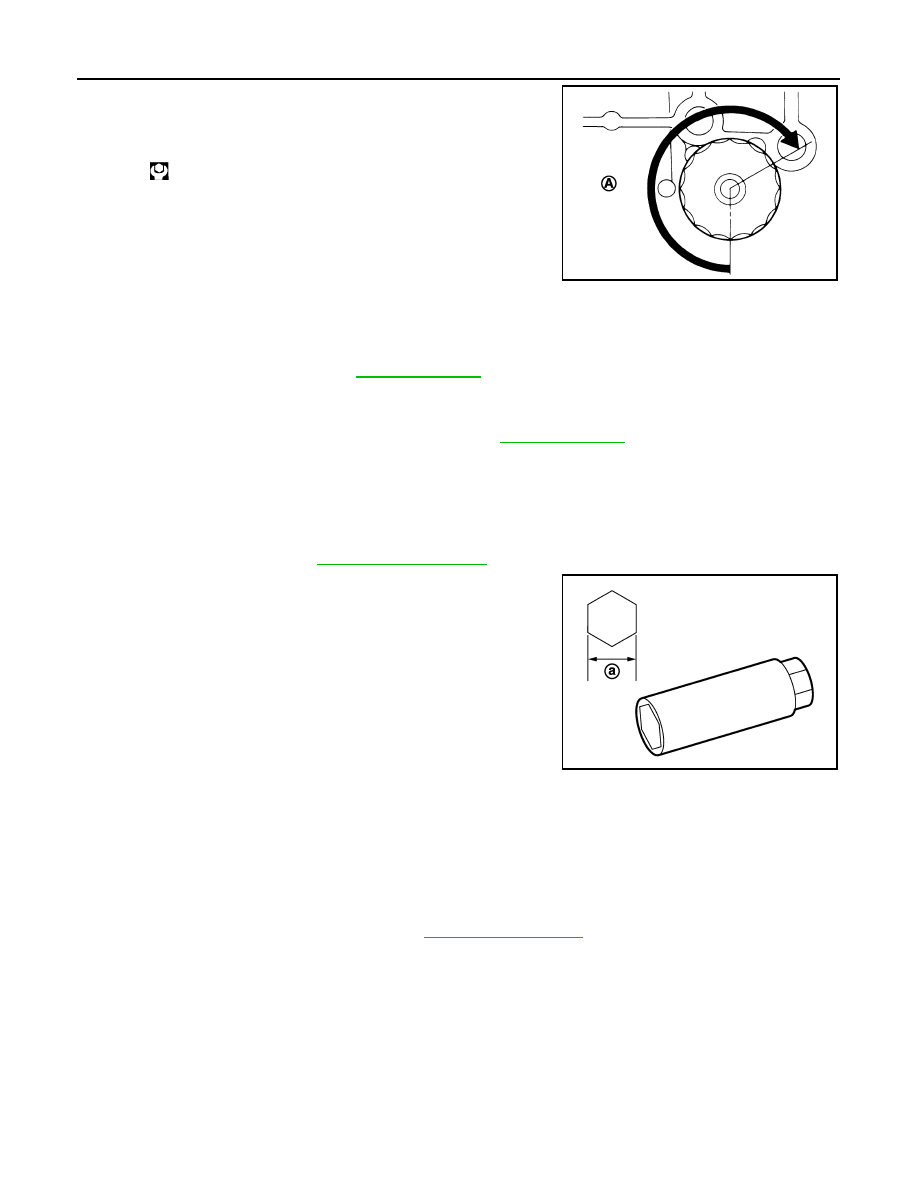Nissan Cube. Manual - part 661

MA-18
< PERIODIC MAINTENANCE >
ENGINE MAINTENANCE
3.
Screw oil filter manually until it touches the installation surface,
then tighten it by 2/3 turn (A). Or tighten to specification.
OIL FILTER : Inspection
INFOID:0000000009949429
INSPECTION AFTER INSTALLATION
1.
Check the engine oil level. Refer to
.
2.
Start the engine, and check that there is no leakage of engine oil.
3.
Stop the engine and wait for 10 minutes.
4.
Check the engine oil level, and adjust the level. Refer to
.
SPARK PLUG
SPARK PLUG : Removal and Installation
INFOID:0000000010269295
REMOVAL
1.
Remove ignition coil. Refer to
.
2.
Remove spark plug with a spark plug wrench (commercial ser-
vice tool).
CAUTION:
Never drop or shock spark plug.
INSTALLATION
Install in the reverse order of removal.
SPARK PLUG : Inspection
INFOID:0000000010269296
INSPECTION AFTER REMOVAL
Use the standard type spark plug for normal condition.
CAUTION:
Oil filter:
: 17.7 N·m (1.8 kg-m, 13 ft-lb)
JPBIA0077ZZ
a
: 14 mm (0.55 in)
JPBIA0030ZZ
Spark plug (Standard type)
: Refer to